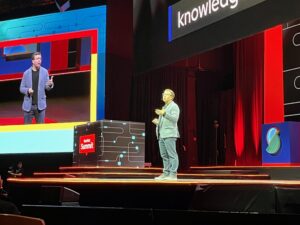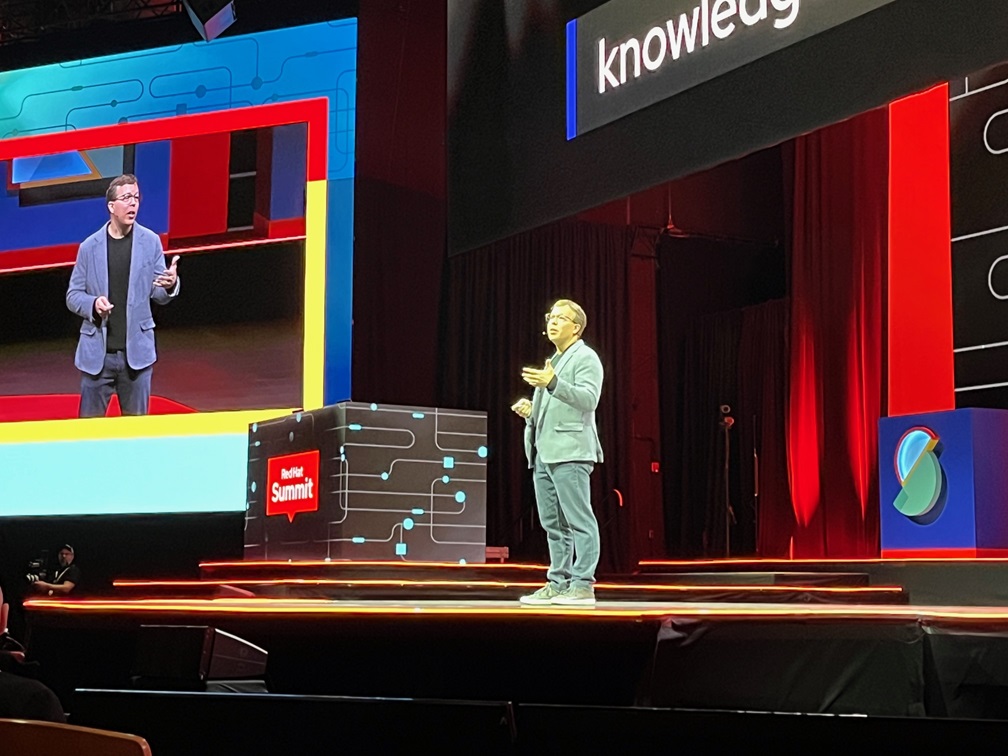Red Hat Champions Open-Source Communities to Evolve AI Models, Red Hat Inc. presented its vision for generative AI at its annual Red Hat Summit in Denver. The company believes open-source communities, not single vendors, will define AI’s future. In fact, this philosophy shapes its core strategy.
🌱 Open Source Powers AI Innovation
Firstly, Red Hat enhanced OpenShift AI to streamline AI app development on its open, hybrid platform. Additionally, the company introduced Konveyor to extend generative AI within cloud-native environments. Both improvements reflect its open-source-first belief.
“AI won’t be built by a single vendor or model. Instead, it will run everywhere and rely on open source,” said Matt Hicks, Red Hat’s CEO.
🧠 Red Hat Enterprise Linux AI: A Foundation for Models
Moreover, Red Hat launched RHEL AI, a platform integrating IBM’s Granite open-source language models and tools like LAB (Large-scale Alignment for chatBots). Through its InstructLab initiative, the community can now actively contribute AI models—making innovation more inclusive.
🔗 Adding Open-Source to the AI Chain
as Red Hat Champions Open-Source Communities to Evolve AI Models, Hicks displayed how Amazon Llama and Mistral AI lead to Hugging Face—and now Red Hat. He highlighted how easy it now is for users with minimal data science skills to fine-tune open models. In short, Red Hat bridges that gap.

⚙️ Lightspeed to Ansible: Building AI End-to-End
Red Hat’s strategy centers around full-stack AI tools:
-
Lightspeed for generative AI services
-
Granite LLMs via RHEL AI
-
OpenShift AI for development
-
Ansible Automation for AI-driven infrastructure
These integrated tools empower enterprises to build, manage, and scale AI applications.
✅ Policy as Code Enhances Governance
Also noteworthy, Ansible now supports policy-as-code for real-time compliance and governance. This feature enables organizations to check AI-enforced policies during builds or automation runs. According to Sathish Balakrishnan, that’s essential for secure AI adoption.
🔌 Intel Partnership Boosts OpenShift AI
Further reinforcing its open stance, Red Hat partnered with Intel, adding support for Gaudi AI accelerators, Xeon, Core Ultra, and Arc GPUs to OpenShift AI. Intel CEO Pat Gelsinger emphasized, “We’re not just writing AI’s future, we’re building it.”
☁️ Hybrid Cloud Remains Central
Indeed, Red Hat reaffirmed its hybrid-cloud commitment. Chris Wright, CTO, said enterprises separating AI training and inference need hybrid solutions. Thus, the new Connectivity Link tool supports multi-cloud data flow—just what businesses want.
🚀 Final Thoughts
Ultimately, Red Hat positions itself as a dual force: AI user and AI enabler. By opening foundational models to community contributions, it advances the next generation of AI innovation.
In Mathew Hicks’ words: “Open-source artifacts hold common knowledge. That’s the promise of open source—and it fits Red Hat perfectly.
For more visit our site.



